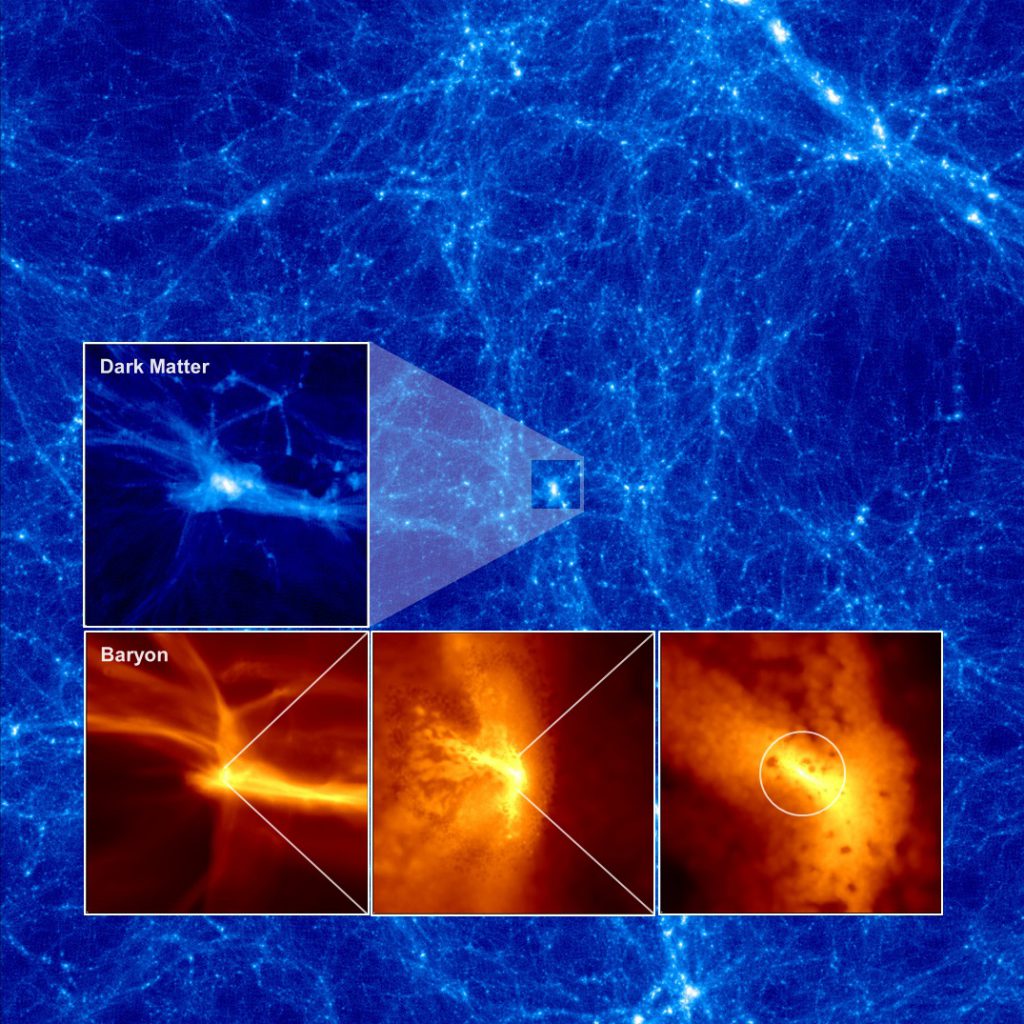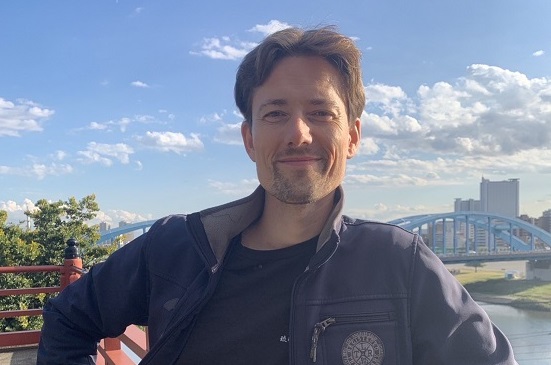Supersonic gas streams left over from the Big Bang drive massive black hole formation
September 29, 2017
Kavli Institute for the Physics and Mathematics of the Universe (Kavli IPMU)
An international team of researchers has successfully used a super-computer simulation to recreate the formation of a massive black hole from supersonic gas streams left over from the Big Bang. Their study, published in this week’s Science, shows this black hole could be the source of the birth and development of the largest and oldest super-massive black holes recorded in our Universe.

Figure 1: Projected density distributions of dark matter (background and top panel) and gas (bottom three panels) components when the massive star forms.
This research was supported by MEXT as “Priority Issue on post-K computer” (Elucidation of the Fundamental Laws and Evolution of the Universe) and JICFuS.
Kavli IPMU Web Site
http://www.ipmu.jp/en/20170929-Blackhole
Paper Details
Journal: Science September 28, 2017
Title: Supersonic Gas Streams Enhance the Formation of Massive Black Holes in the Early Universe
Authors: Shingo Hirano (1,2), Takashi Hosokawa (2,3,4), Naoki Yoshida (2,4,5), Rolf Kuiper (6)
Affiliations:
(1) Department of Astronomy, University of Texas, Austin, TX 78712, USA
(2) Department of Physics, School of Science, University of Tokyo, Bunkyo, Tokyo 113-0033, Japan
(3) Department of Physics, Kyoto University, Kyoto 606-8502, Japan
(4) Research Center for the Early Universe, University of Tokyo, Tokyo 113-0033, Japan
(5) Kavli Institute for the Physics and Mathematics of the Universe (WPI), UT Institutes for Advanced Study, University of Tokyo, Kashiwa, Chiba 277-8583, Japan
(6) University of Tubingen, Institute of Astronomy and Astrophysics, Auf der Morgenstelle 10, D-72076 Tubingen, Germany












































